The New GENESIS
|
After a considerable time
away from F2B FAI competition and flying R/C and Old Time, Bob Hunt backed
by his intime desire and support from close people is back to the stage.
With a re-designed Genesis having a more futuristic look but still with
rounded shapes, his plane proved to be a hunter at the Trials 2003. |

|
Written
by Bob Hunt at the Stuka Forum :
First
off, let me thank everyone for having such an interest in my design. I have
often been told that I should try competing with a Genesis again, and even my
son, Rob, felt that this would be a good choice.
After
the Team Trials, almost every one of the judges approached me and told me how
well they thought the model presented, so don't be surprised to see more of them
in the future.
This
is not a copy of any of the Genesis models of old. It is basically built on the
aerodynamics of Robby's Geo-Star design, which we both liked. The stab and
elevator is a bit smaller than the Geo-Star, but the wing and the moments are
very close. The model has a 10 inch nose moment and a 16 3/4 inch tail moment. I
have it on my scale at 47.5 ounces ready to fly. It has a Ro-Jett .40 rear
exhaust engine, and at the present time an old Future Force tuned pipe. I'm
still experimenting, but the results of the trials show that it is at least
competitive as is at the upper level.
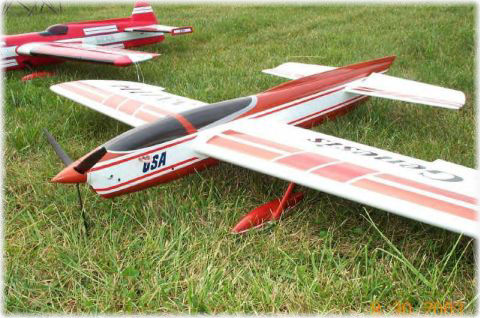
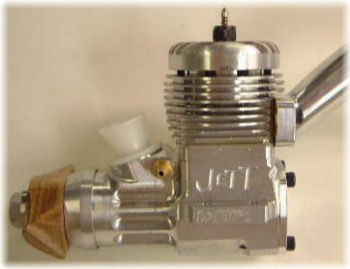
|
RO-JETT
.40 - Rear Exhaust
|
As
for the new AMA number? I was asked when I was inducted into the AMA Hall of
Fame if I would like to request an available lower number. I chose 1114. Why?
Because it's easy to mask off and paint!
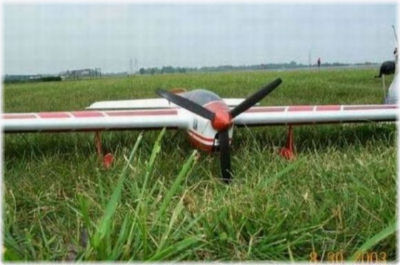
The
wing tips were patterned after Bill Werwage's USA-1 tips. I just like the way
they look, and think that they compliment the new, rounder fuselage shapes
better. Interestingly, Billy told me that Bob Baron told him that he also tried
to capture the USA-1 tip shape when he designed his Avanti.
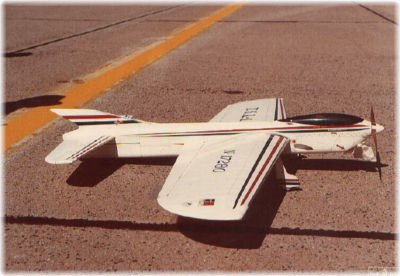
|
USA-1
from Bill Werwage - 1984
|
Apparently
both Bob and I missed just a bit on the shape, but I still like it!
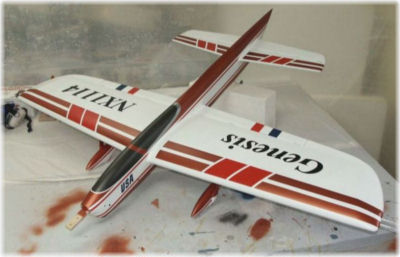
The
small flaps really work well, and allow the model to transition quickly and
smoothly in round maneuvers. They also do not pitch the model forward as much
when deployed, yielding less stick pressure build up in wind. Of course, with
flaps this small (around fifty total inches of flap area), you have to build
light!

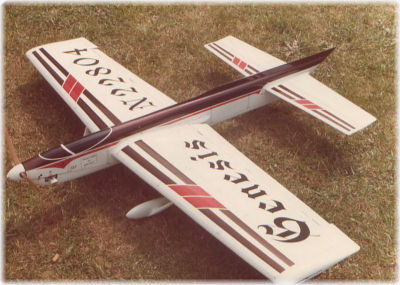
|
Genesis
- New Version
|
Genesis
- First Version
|









